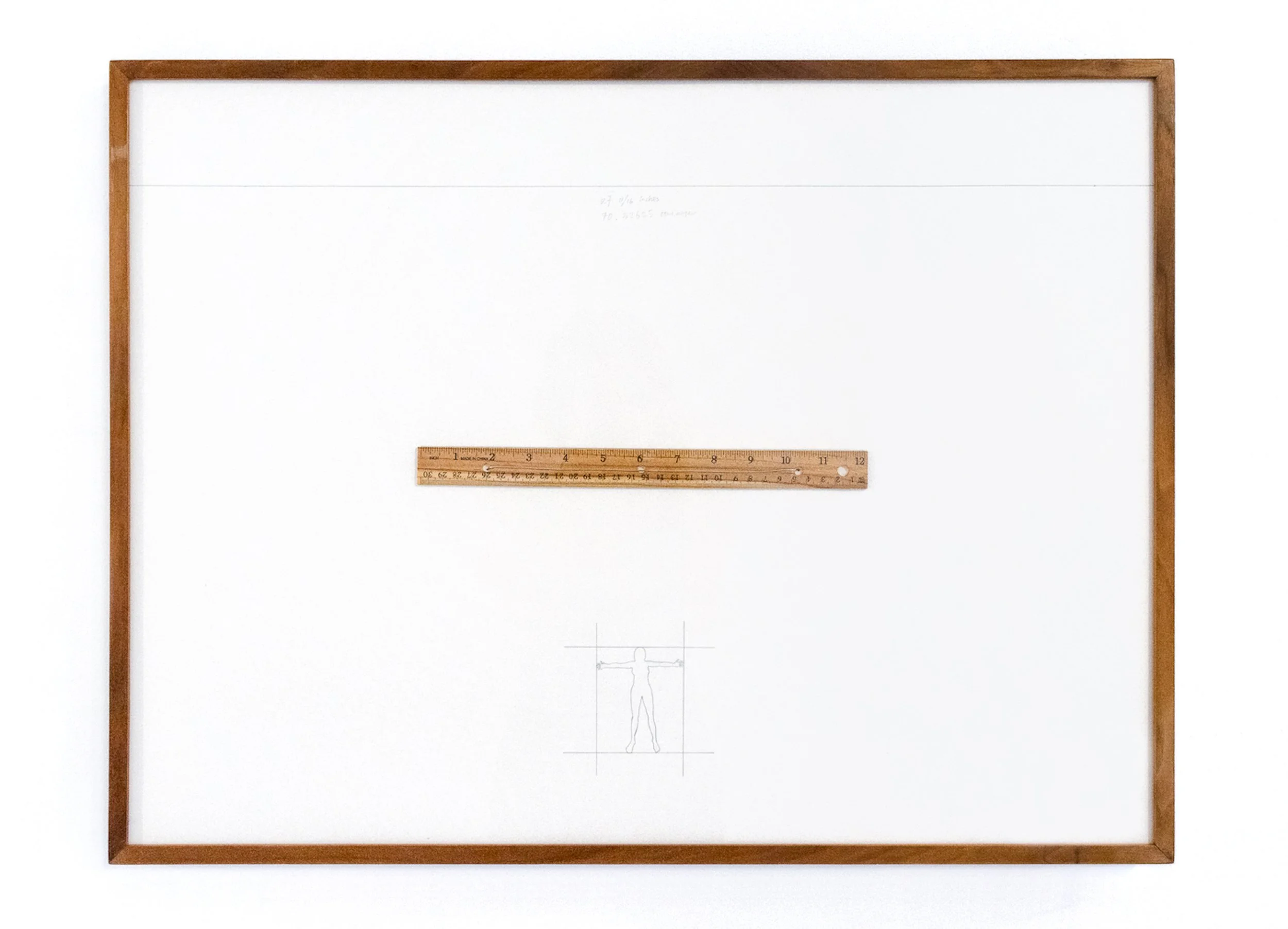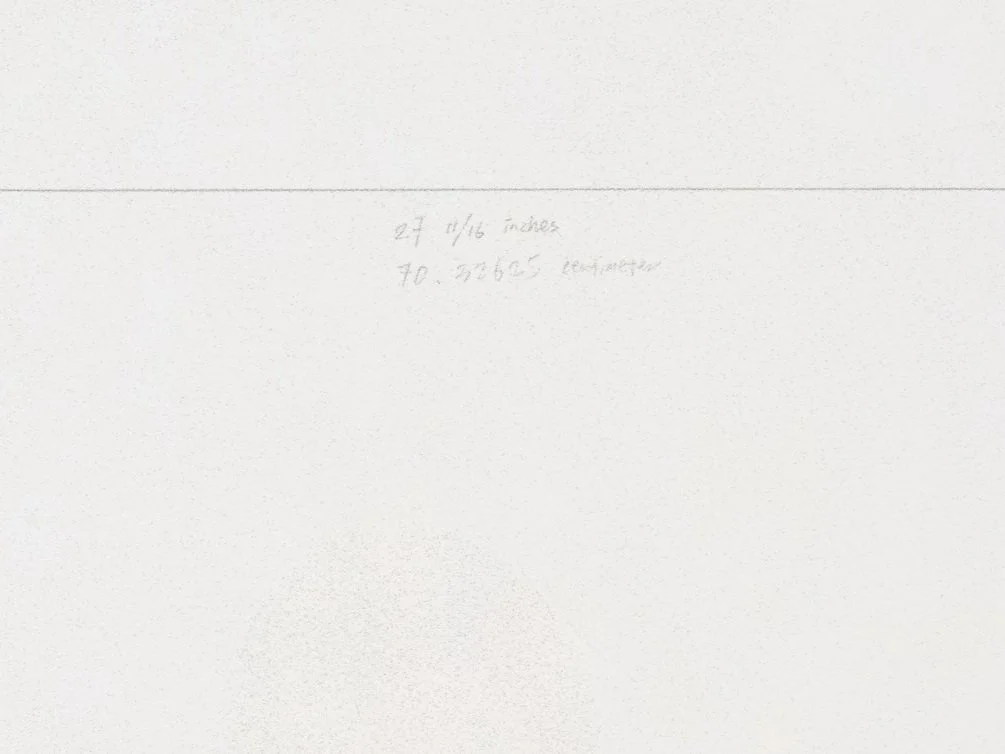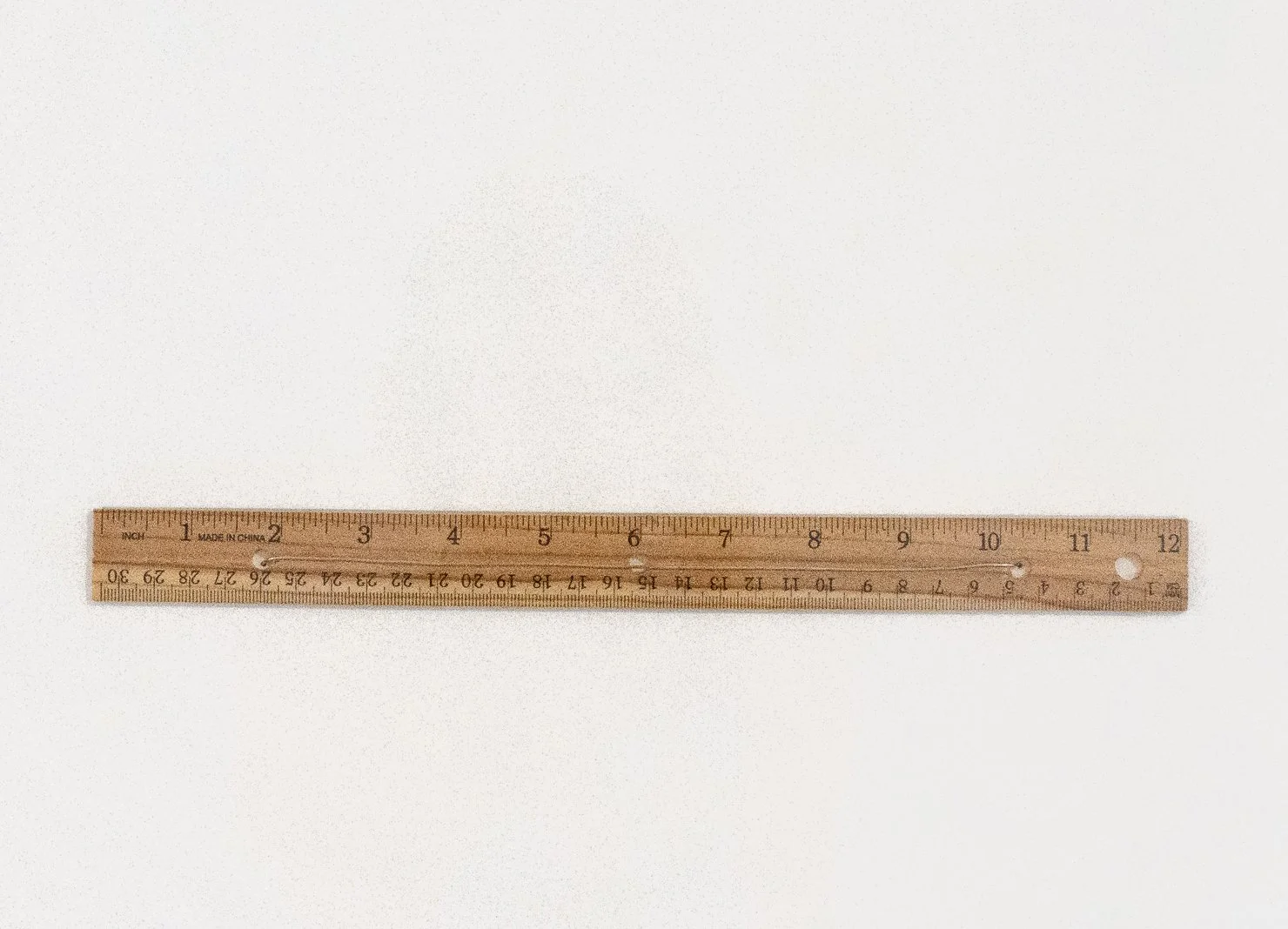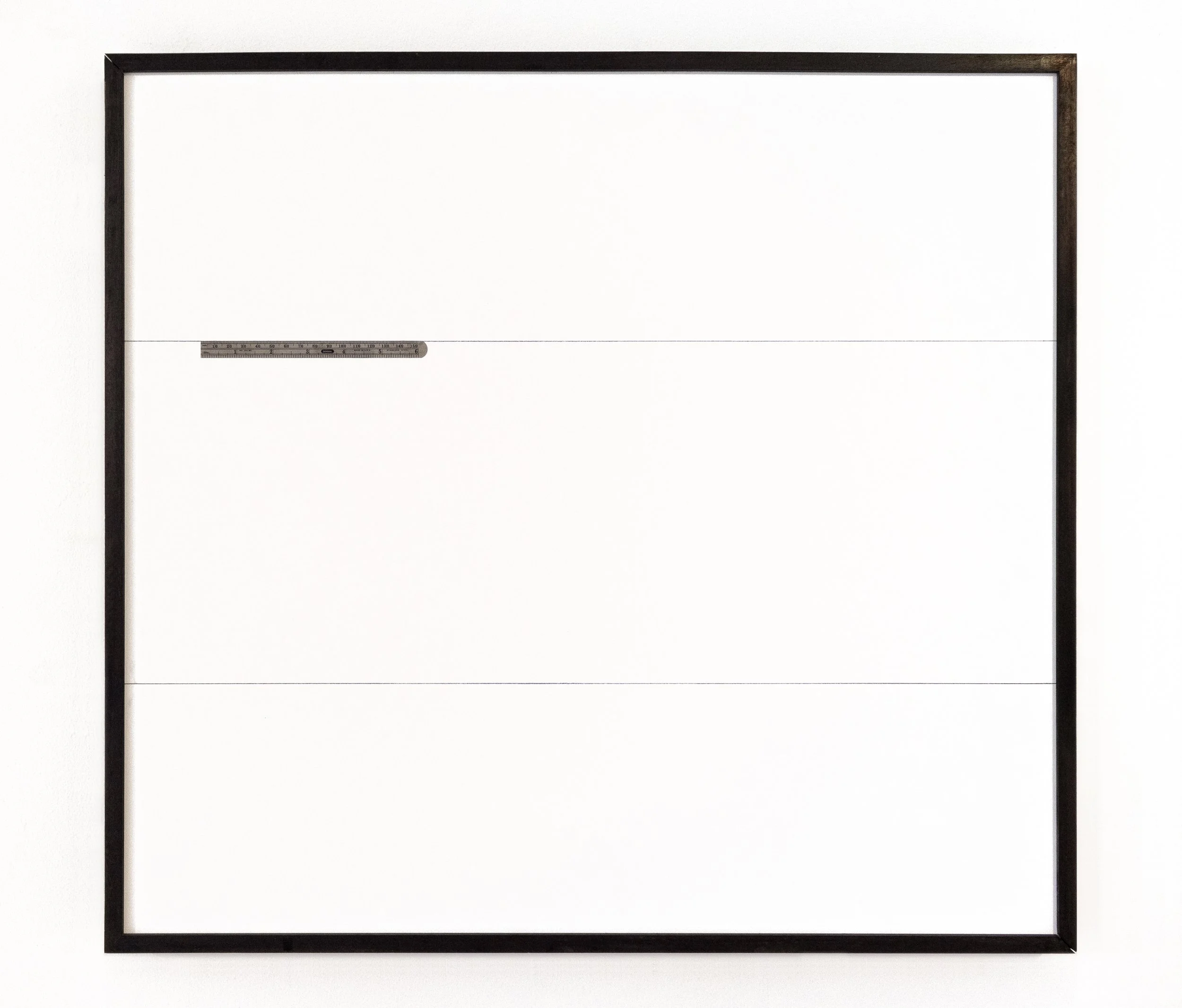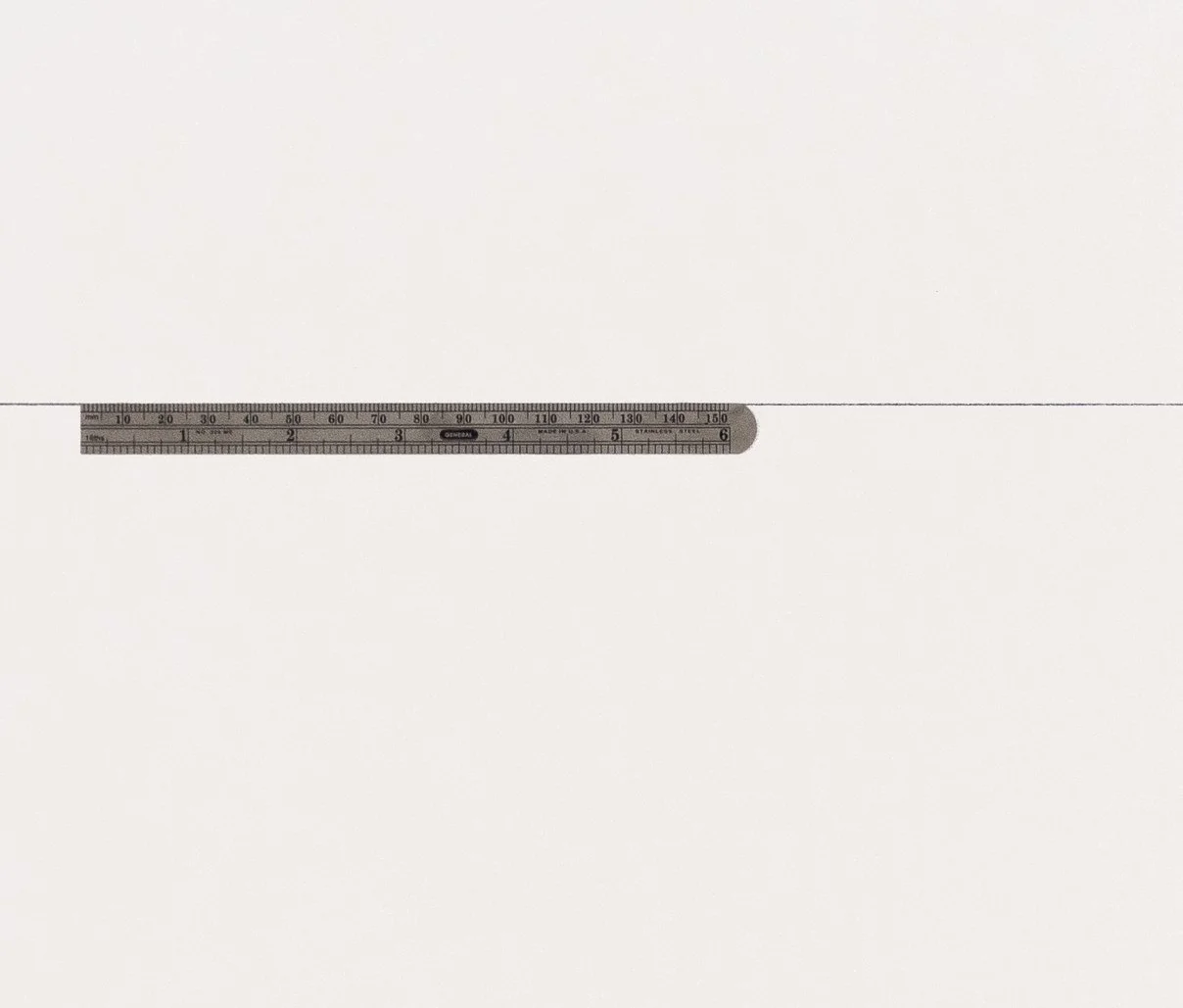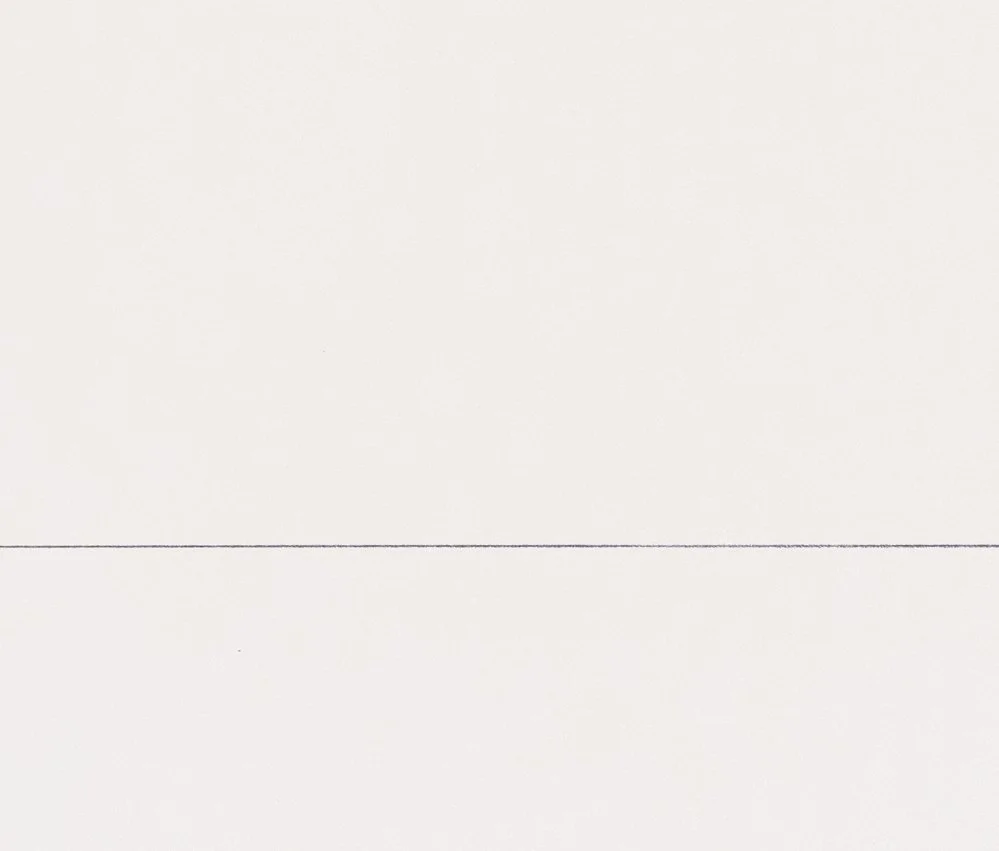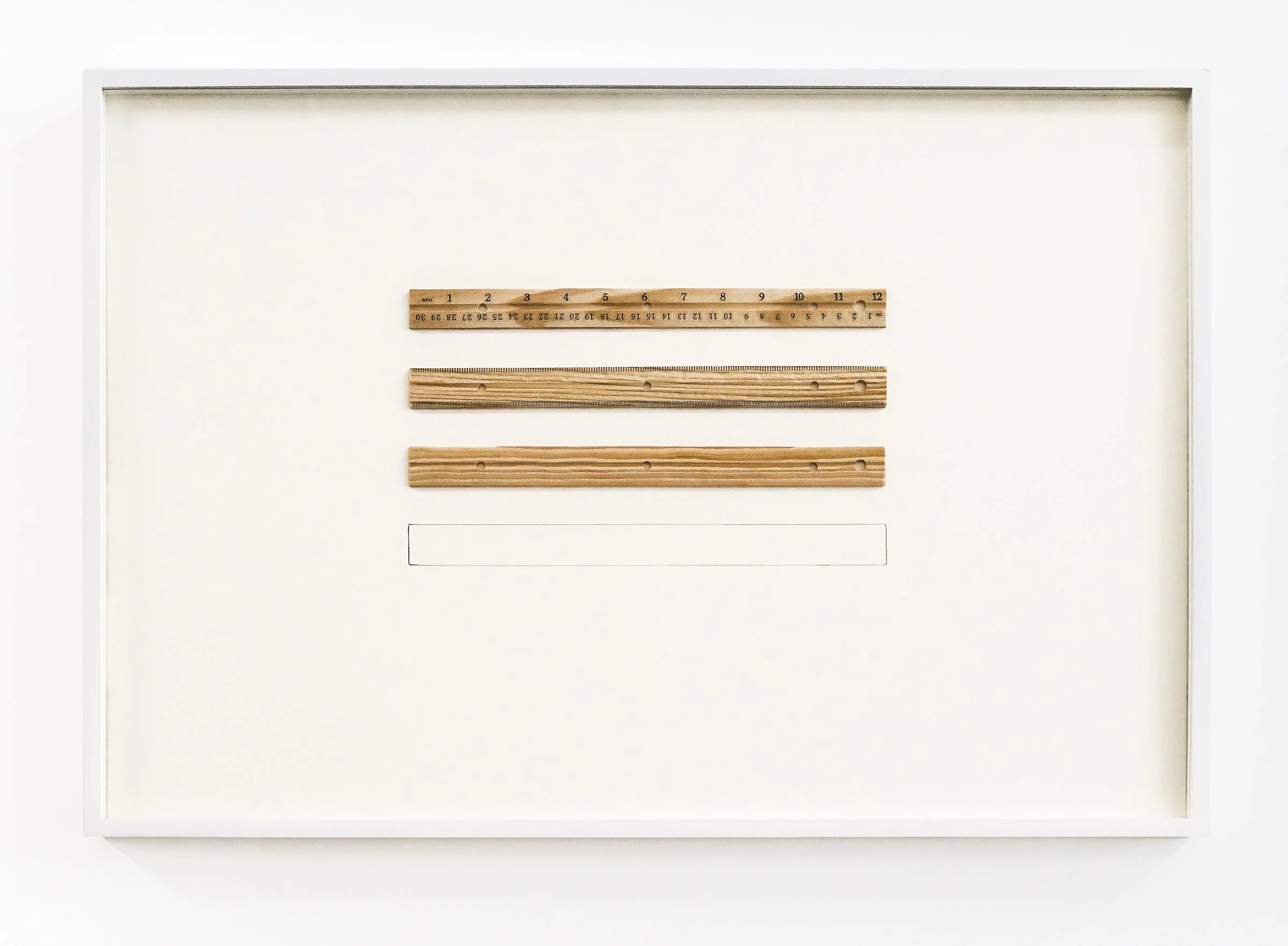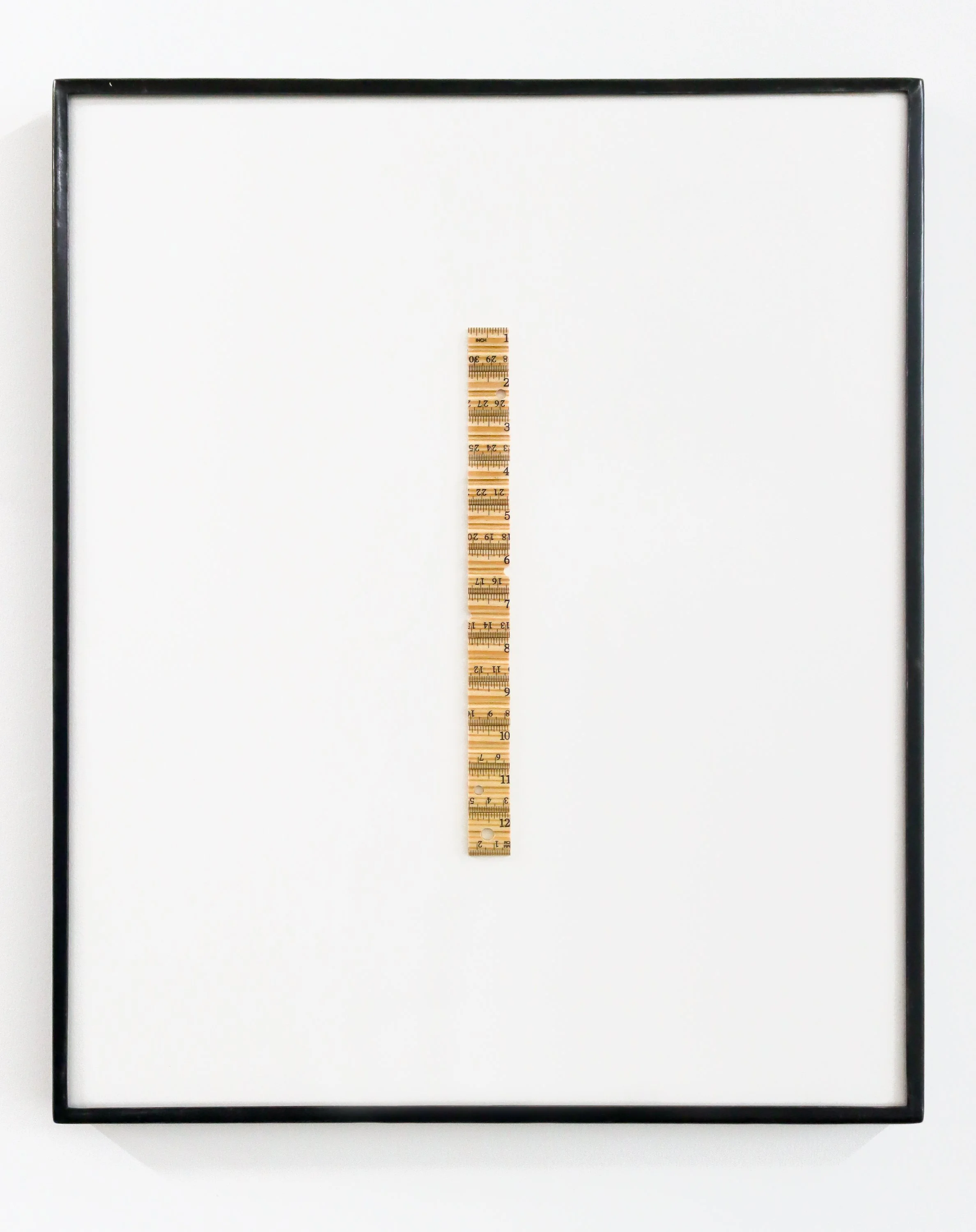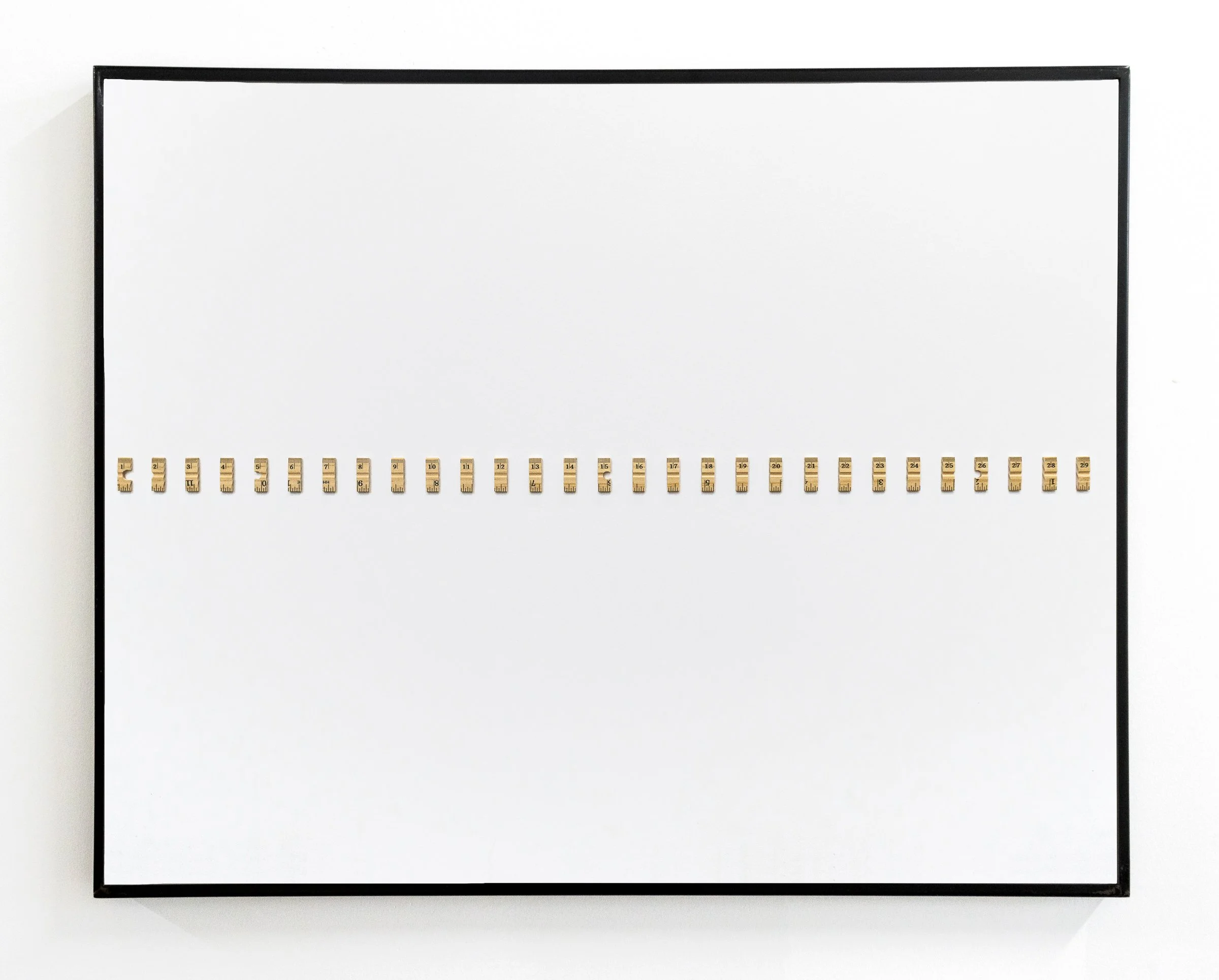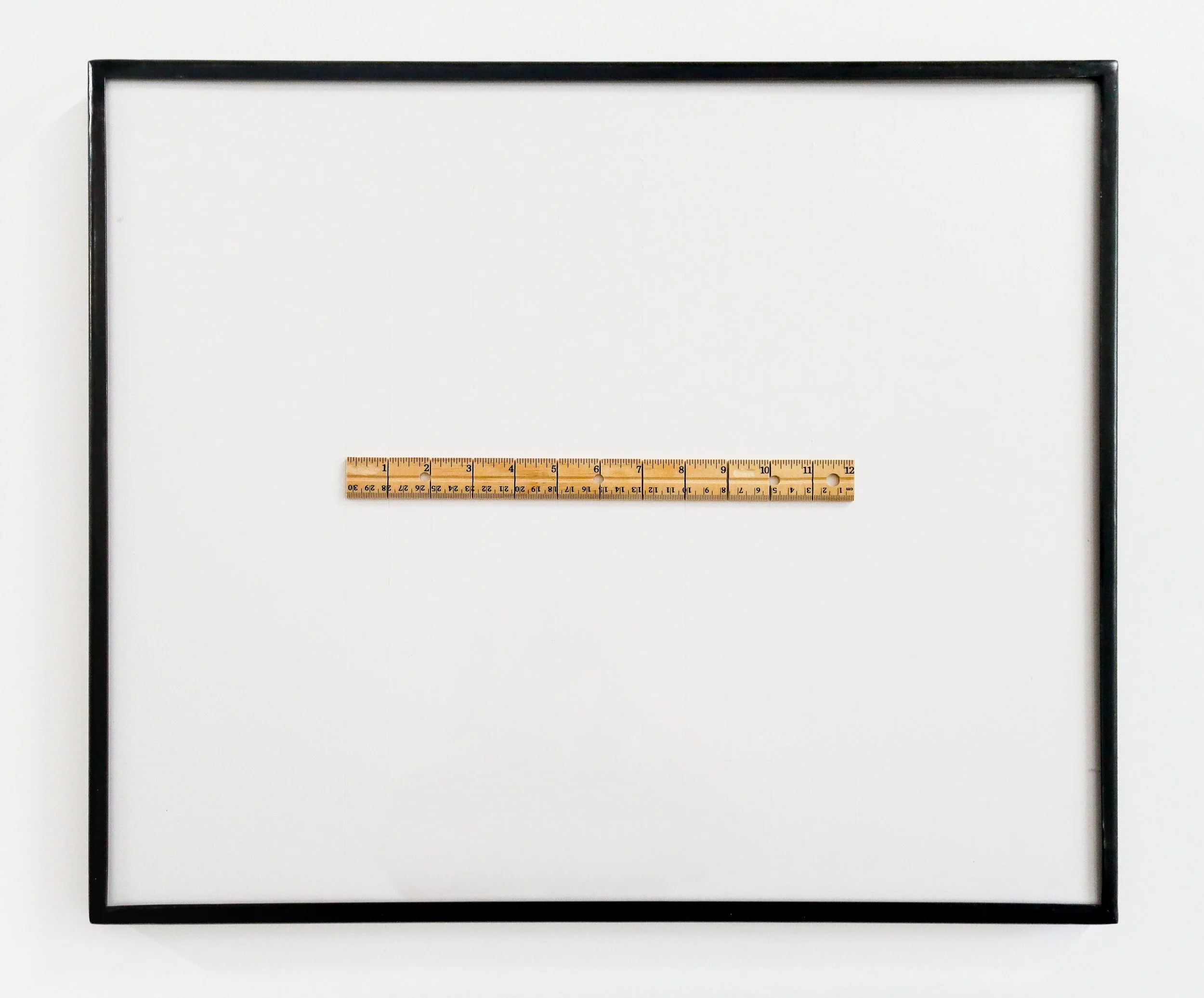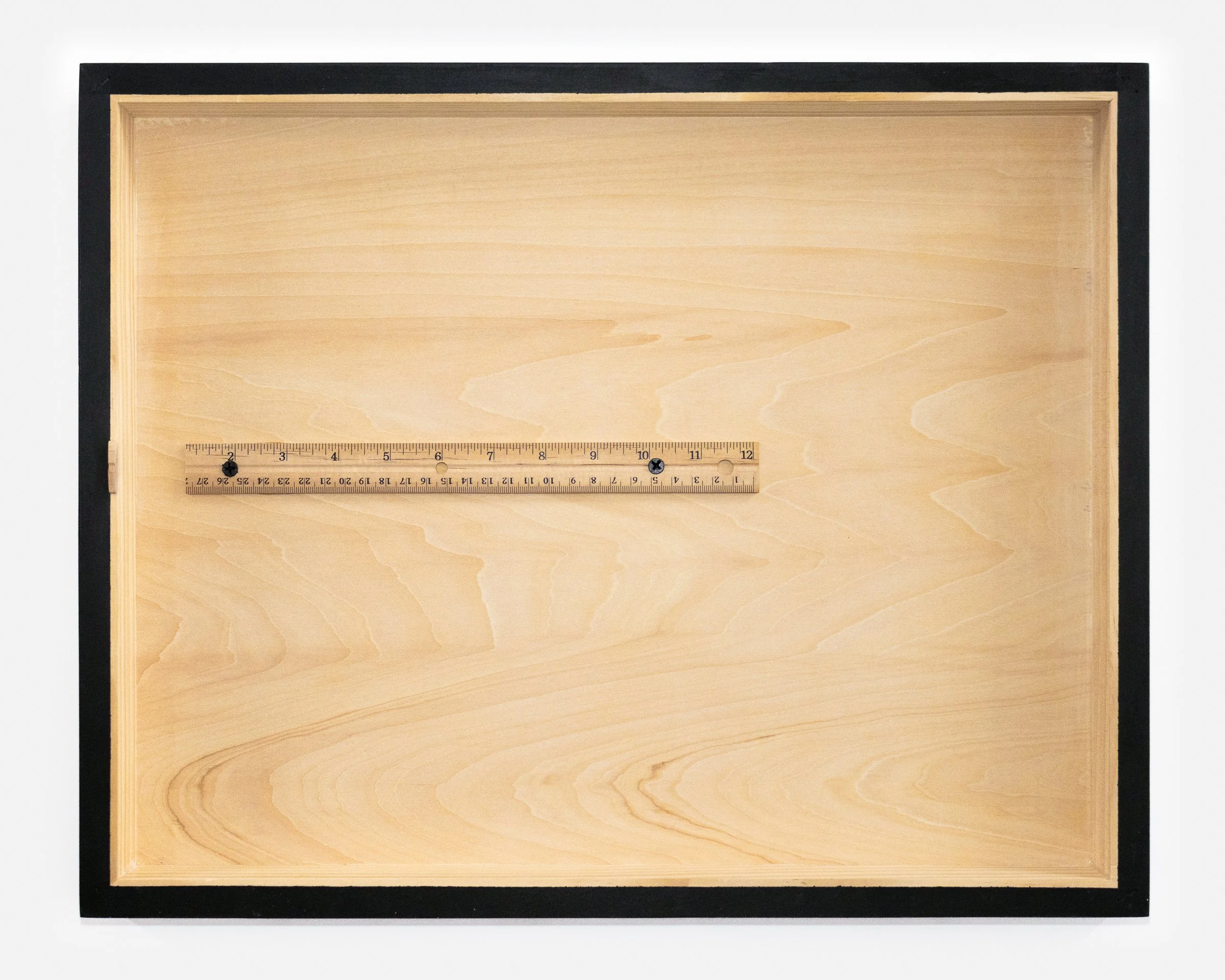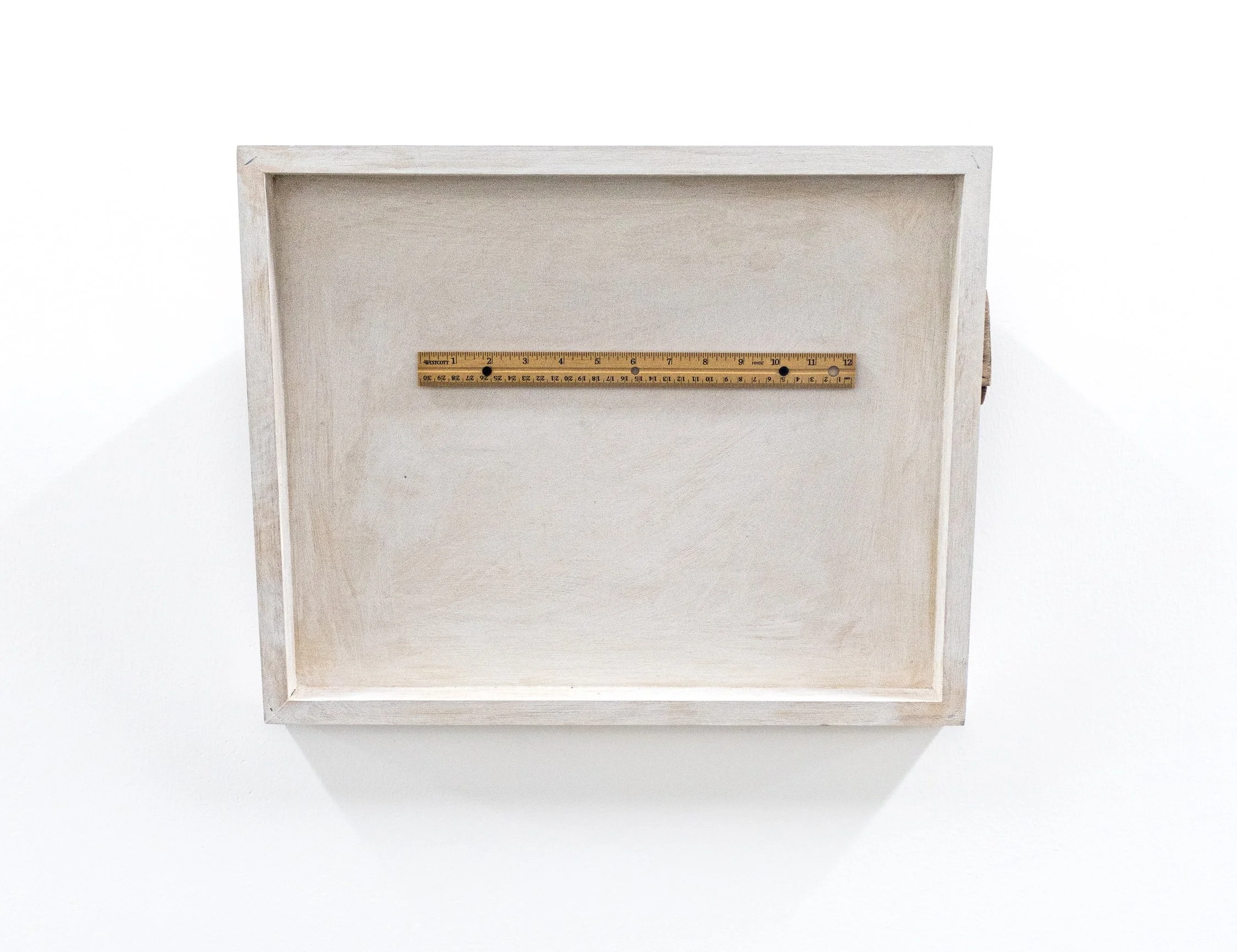Shuai Yang
(b.1998) New York based artist
How Much Is It No. 1, 2024. Wood, graphite and found frame, 21 5/8 x 28 3/4 inches
As an instruction to the method of using herself as the measurement, How Much Is It No.1 employs three elements from the procedure of measurement: the measured existence, the measuring instrument, and the measurand (the result of measurement represented by Arabic numbers, imperial, and converted metric units here). It is made with a giveaway museum frame, allowing her to base the artistic mediation on the existing dimensions. Yang indicated the width of the framed image ground with a pencil line labeled “27 11/16 inches” and “70.32625 centimeters”, results gained from measuring with a wooden ruler bought in a convenience store. She then fixed the ruler underneath the measurand and drew a diagram at the bottom of the page displaying her body becoming the origin of a measuring unit.
How Much Is It No.2, 2024. Metal, graphite, wall paint and found frame, 26 5/8 x 24 3/4 inches
How Much Is It No.2 emphasizes the act of measuring by attaching a bought metal ruler to the drawing. A second line reminds free and allows any potential way of encounterment. It is through a system of methods that we access phenomena of some sort, and these phenomena then become our knowledge of the world. The measurement system operates in this manner. The question is: does it disclose the truth or solely manifest the system itself to us?
How Much Is It No.3, 2024, Wood, graphite and found frame, 19 1/2 x 28 3/4 inches
How Much Is It No.3 exposes the basic system of length measurement by deconstructing the material and form of a ruler. The incompleteness of its text, numbers, gradation marks, and the wooden body unsettles the rigidity of this man-made instrument — both as a practical tool and as a means of knowledge production. Through four iterations of the same ruler, culminating in a non-object, the work drifts the idea of measurement beyond fixed representation.
How Much Is It No.4, 2024, Wood and found frame, 24 1/8 x 20 1/8 inches
How Much Is It No.5, 2024, Wood and found frame, 22 1/8 x 28 1/8 inches
Through How Much Is It No. 4 and No. 5, the rulers are deconstructed at each inch mark. The fragments are arranged in a composition where the intervals themselves also measure one inch, thereby questioning what measurement really means.
How Much Is It No.6, 2024, Wood and found frame, 24 1/8 x 30 1/4 inches
How Much Is It No.7, 2024, Wood, cutting marks and found frame, 20 1/8 x 24 1/8 inches
How Much Is It No.7 points at the unattainable nature of the signified. Once translated into material reality, measurement as a concept becomes impossible to grasp. Every attempt to reach the precise measurement has fallen - in the case of this work, the temptations were processed by cutting at the ruler’s inch marks and cutting to the matboard at one-inch intervals. Material nature impedes the manifestation of the perfect truth. Like language, measurement is a system of signifiers that point to but can never reach its signified.
How Much Is It No.8, 2024, Wood, screws and acrylic paint, 16 x 20 x 1 1/2 inches
How Much Is It No.8 prompts a physical condition in which the first inch of a ruler is to be decided by the viewer. The tiny wooden piece that was “before-zero” is placed on the raised edge, creating a situation in which the measurement of the first inch changes according to the viewer’s position, eventually disrupting the two-dimensionality of the perception of length.
How Much Is It No.9, 2024, Wood, photograph and found frame, 20 7/8 x 24 7/8 inches
How Much Is It No.9 plays around the idea of a ruler as a representation of measurement by juxtaposing the physical ruler and its image in such a way that they measure each other.
How Much Is It No.11, 2025, Ruler, cradle, gesso, wood, nails, 15 1/2 x 20 1/2 x 5 1/2 inches
